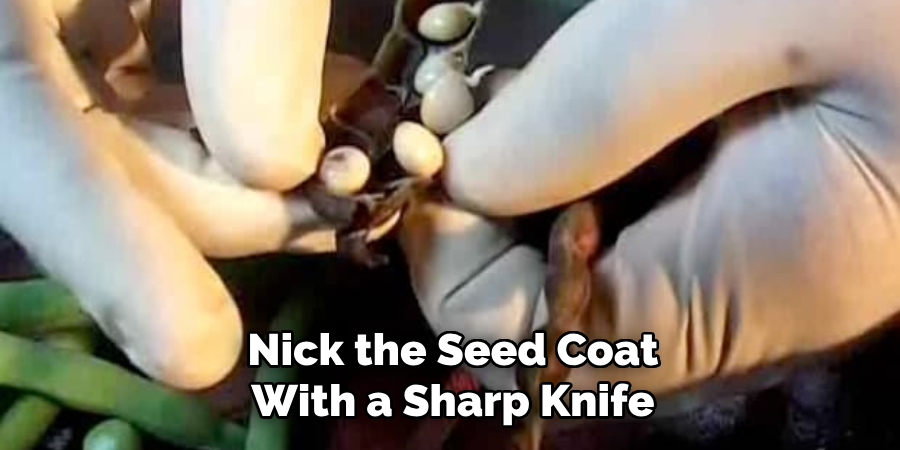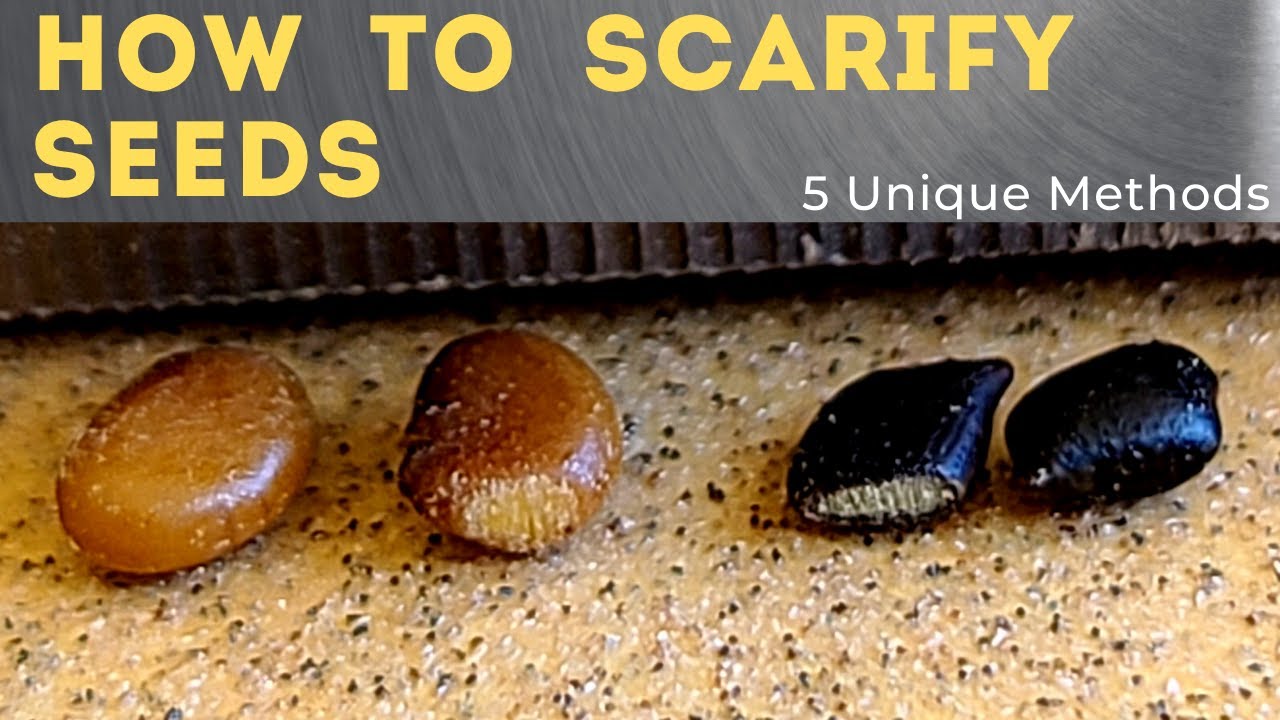To scarify seeds, gently scratch their outer coating before planting. This process helps improve germination rates by allowing water to penetrate the seed.
In addition, scarification can simulate natural environmental conditions that promote the breaking of dormancy.

Credit: www.americanmeadows.com
How to Scarify Seeds: Step by Step Guide
The Importance Of Scarifying Seeds
Scarifying seeds is crucial for many plant species to enhance germination and growth. Seeds have natural protective coatings that can be hard and impermeable, hindering water uptake and oxygen exchange. Scarification breaks through these hard shells, allowing moisture and air to penetrate the seed and trigger germination.
Scarifying seeds can be achieved through various methods, such as manual abrasion, soaking in water, or exposing them to heat or chemicals. This process imitates the natural wear and tear seeds experience in their environments, promoting quicker and more uniform germination.
Some seeds, like those of certain wildflowers or trees, have evolved to depend on scarification for their survival and successful propagation. By understanding the importance of scarifying seeds, gardeners and horticulturists can improve their success in growing a wide range of plant species.
Methods Of Scarifying Seeds
Scarifying seeds is an important step in the germination process. There are various physical scarification techniques that can be employed. Mechanical scarification involves using tools to scratch the seed coat. Sandpaper scarification is another effective method that helps break the hard outer layer.
Hot water scarification requires soaking seeds in hot water to soften the seed coat. Chemical scarification involves using acids to weaken the outer layer. Acid scarification and acid smoke scarification are two popular chemical methods. Alternatively, natural scarification methods can be used.
Freezing scarification exposes seeds to freezing temperatures to promote germination. Animal digestion scarification occurs when seeds pass through an animal’s digestive system. Each method has its own benefits and effectiveness, so it’s important to choose the right technique based on the seed type and desired results.
Tips And Precautions For Scarifying Seeds
Scarifying seeds is an important step for successful germination. Firstly, it’s crucial to identify which seeds require scarification. Timing is key; ensure you scarify the seeds at the right stage to promote optimal results. Safety is paramount, so take precautionary measures when handling chemicals or equipment.
Pre-soaking the seeds before scarification can aid in the process. Be cautious not to over- or under-scarify as it can affect germination. Remember, scarifying seeds is essential for breaking dormancy and increasing the chances of successful growth. So, follow these tips and precautions to ensure your scarification process is effective and yields favorable results.
Frequently Asked Questions Of How To Scarify Seeds
What Is Seed Scarification?
Seed scarification is the process of breaking or weakening the hard outer coating of a seed to improve germination. It can involve techniques such as nicking, sanding, or soaking in water or chemicals to enhance water absorption and promote seedling emergence.
Why Is Scarification Important For Seeds?
Scarification is important for seeds with hard coatings because it helps to speed up germination. The hard coating can prevent water and air from reaching the embryo inside the seed, and scarification helps to overcome this barrier by allowing water to penetrate and initiate germination.
How Do You Scarify Seeds At Home?
To scarify seeds at home, you can start by soaking them in warm water for a few hours. Alternatively, you can nick the seed coat with a sharp knife or file it gently to create a small crack. Depending on the seed species, scarification techniques may vary, so it’s essential to research specific requirements for successful scarification.

When Is The Best Time To Scarify Seeds?
The best time to scarify seeds varies depending on the plant species, but generally, it is done before sowing or planting. Some seeds may require scarification before they go through a cold stratification period, while others can be scarified just before planting.
Can All Seeds Be Scarified?
Not all seeds require scarification. Some seeds have naturally thin or permeable coatings that allow water to penetrate easily, so scarification is not necessary. However, if you have seeds with hard, impermeable coats, scarification can significantly improve your chances of successful germination.
What Precautions Should I Take When Scarifying Seeds?
When scarifying seeds, it’s important to handle them carefully to avoid damaging the embryo. Ensure you follow specific scarification methods recommended for the seed species and avoid excessive scarification that could harm the seed. Additionally, maintain clean and sterile conditions to prevent the risk of fungal or bacterial infections.
Conclusion
Scarifying seeds is a vital step for improving germination rates and promoting healthy plant growth. By breaking the seed coat, we enable moisture and air to reach the embryo, allowing it to sprout more easily. This process is especially beneficial for hard-coated seeds, such as those of many native plants and wildflowers.
Scarification methods such as mechanical abrasion, hot water treatment, acid soaking, or freezing can all be effective, depending on the species. However, it’s crucial to research the specific requirements of the seeds you’re working with to ensure success. Incorporating scarification techniques into your gardening routine can lead to a higher rate of successful seed germination, saving you time and effort.
So, if you’re eager to enhance your gardening results, don’t overlook the importance of scarifying seeds. Give your seeds the best chance to thrive and enjoy a bountiful garden.

